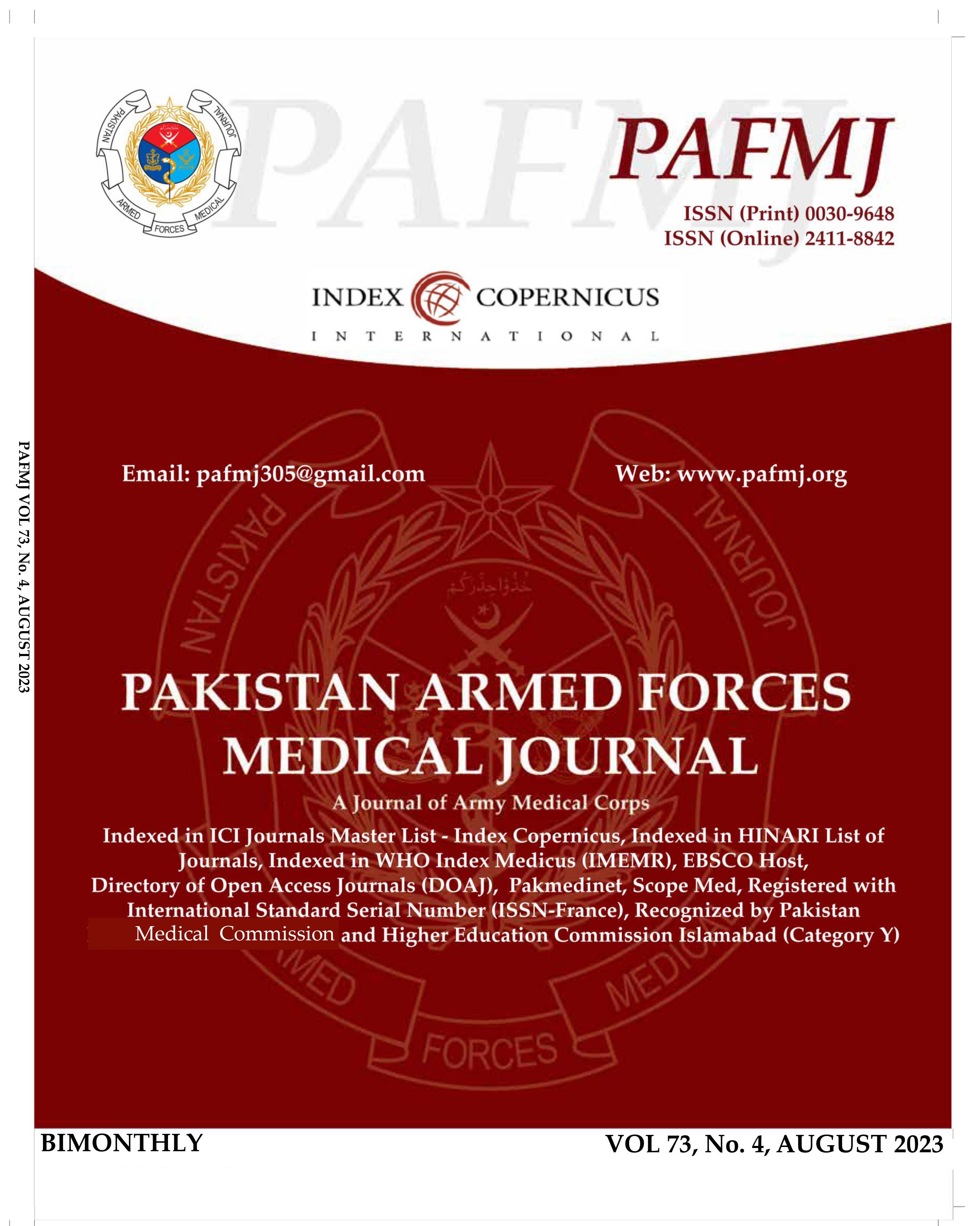Comparison of Hemodynamic Stability of Patients Undergoing Appendectomy under Spinal Anesthesia versus Blend of Ketamine and Midazolam with Spinal Anesthesia
DOI:
https://doi.org/10.51253/pafmj.v73i4.9481Keywords:
Anesthesia, Ketamine, Midazolam, Spinal anesthesiaAbstract
Objective: To compare appendectomy under spinal anaesthesia versus combining Ketamine and Midazolam with spinal anaesthesia.
Study Design: Quasi-experimental study.
Place and Duration of Study: Pak Emirates Military Hospital, Rawalpindi, from Jan to June 2022.
Methodology: A sample of 100 patients fulfilling the inclusion/exclusion criteria was collected. A random segregation was made into two equal groups through the lottery method resulting in fifty patients in each Group-50. The Group A patients received spinal anaesthesia while and were given 0.25mg/kg Ketamine and 2mg Midazolam 2 minutes before incision. Group B patients only received spinal anaesthesia. Patients’ hemodynamics were monitored throughout surgery. The primary parameter studied was hemodynamic stability, and the secondary parameter was conversion into general anaesthesia.
Results: The primary outcome was hemodynamic stability. 48(96%) patients remained hemodynamically stable in Group A. Only 2(4%) patients showed hemodynamic instability. The Group B patient had lower hemodynamic stability as 29(58%) patients were hemodynamically unstable versus 21(42%) being stable (p-value <0.001).
Conclusion: Using Ketamine and Midazolam as adjuvants to spinal anaesthesia improves hemodynamic stability and success for open appendectomy.
Keywords: Anesthesia, Ketamine, Midazolam, Spinal anesthesia.















